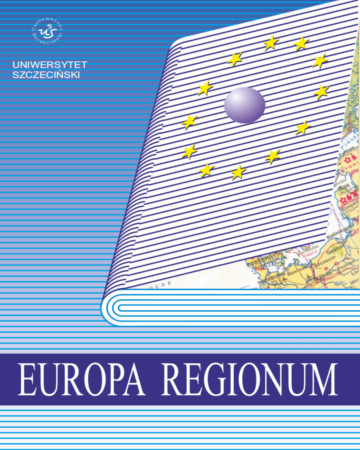
ISSN: 1428-278X
eISSN: 2717-437X
OAI
DOI: 10.18276/er.2022.38-08


Issue archive /
t. 38 2022
Znaczenie technik graficznej wizualizacji danych diagnostycznych w dokumentach planistycznych jednostek samorządu terytorialnego
(The importance of techniques of graphic visualisation of diagnostic data in planning documents of local government units)
| Authors: |
Lucyna
Maury

Związek Miast Polskich Piotr Górka 
Związek Miast Polskich |
| Keywords: | cartogram diagnostic data graph civic dialogue accessibility |
| Data publikacji całości: | 2022 |
| Page range: | 17 (101-117) |
| Klasyfikacja JEL: | O18 O21 C80 |
Abstract
Data on cities aggregated annually are a valuable resource of each territorial self-government unit. On their basis decisions are made, the order of activities carried out is determined. Due to the way of their presentation, which is difficult to read and differs from contemporary, market-friendly graphic forms, the data sets may become useless. The documents are long, incomprehensible, inaccessible, often unsightly – and their accessibility threshold is set too high in relation to the reception capacity not only of the inhabitants, but also of many officials. It results in insufficient reception of created documents among representatives of the social side, which negatively influences the quality of civic dialogue around the issues of local development. This article presents a comprehensive approach to formulating strategic management documents in terms of their readability, ease of reception and accessibility. A set of techniques and principles has been presented, which contribute to transparency and assimilability of presented contents. Some of them are applied in our work, others are still a challenge and a task for the future.
Download file
Article file
Bibliography
| 1. | Grant, R. (2019). Data Visualization. Charts, Maps, Interactive Graphics. CRC Press. |
| 2. | Kirk, A. (2020). Data Visualisation Literacy – Learning to See. Revista de Contabilidad y Dirección, 31, 37–48. |
| 3. | Korycka-Skorupa, J., Nowacki, T., Opach, T., Pasławski, J. (2012). Internetowy Atlas metod kartograficznych. Polski Przegląd Kartograficzny, 44 (2), 105–119. |
| 4. | Mathieson, S.A. (2021). The art and science of Data visualisation. Computerweekly.com, 23–29 March, 20–25. |
| 5. | Pieniążek, M., Zych, M. (2017). Mapy statystyczne. Opracowanie i prezentacja danych. Warszawa: GUS. |
| 6. | Stehle, S., Kitchin, R. (2020). Real-time and archival data visualisation techniques in city dashboards. International Journal Of Geographical Information Science, 34 (2), 344–366. |
| 7. | Wyskwarski, M. (2016). Wizualizacja danych w organizacji gospodarczej. Zeszyty Naukowe Politechniki Śląskiej, 96, 505–517. |
| 8. | Zimnicka, A. (2013). Metody zapisu graficznego informacji w strategiach rozwoju w kontekście jakości zagospodarowania przestrzennego. Szczecin: Zachodniopomorski Uniwersytet Technologiczny. |
| 9. | Zych, M. (2020). Data storytelling w komunikacji społecznej. W: P. Korycińska (red.), Horyzonty informacji (s. 47–61). Kraków: Biblioteka Jagiellońska. |